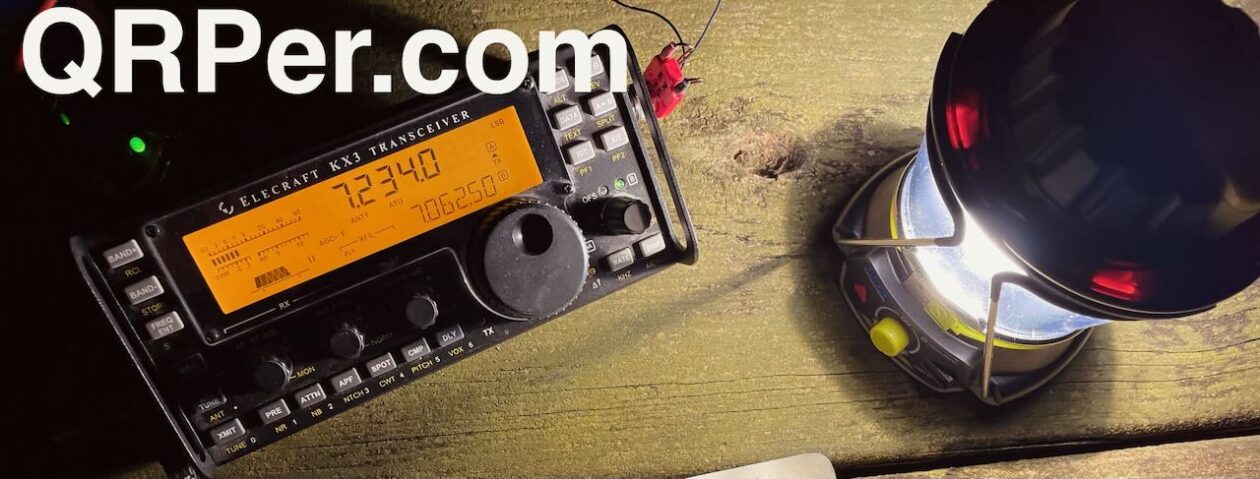 A couple years ago, I started making Hike & Talk video sessions covering in-depth topics that are challenging to answer via email or even long-format blog posts.
A couple years ago, I started making Hike & Talk video sessions covering in-depth topics that are challenging to answer via email or even long-format blog posts.
When I receive a question from a reader and think to myself, “I’d rather answer that in-person than write a reply,” I make a note to do a Hike & Talk session.
These sessions are not scripted, outlined, or formatted in any way shape or form. When I make a Hike and Talk video, I imagine that I’m chatting away with you informally as you join me on a hike or walk.
All this to say that these long-format videos aren’t for everyone, so if it doesn’t sound like your cuppa’ tea, it’s okay to skip it! I promise, I won’t be offended.
Conquering the CW Doldrums
 On January 11, 2023, I was driving back from Raleigh and decided that a quick POTA break was in order. That morning, I read an email from a reader and it was on my mind as I drove to Tuttle Educational State Forest. It was a long email, but here are the relevant bits:
On January 11, 2023, I was driving back from Raleigh and decided that a quick POTA break was in order. That morning, I read an email from a reader and it was on my mind as I drove to Tuttle Educational State Forest. It was a long email, but here are the relevant bits:
Hi Thomas […]I’ve been studying CW on my own for about four months now. I know you advise joining a group like the Long Island CW Club to learn CW but my work schedule simply doesn’t allow for this. I travel frequently and have team members across the globe so my schedule is a mess. I have so little free time.
[…]I’ve been using various CW apps, CW recordings like W1AW and your videos to practice CW. I can’t stress how much your videos have encouraged me along the way because you make this all seem so achievable. I download your videos from Patreon and listen to them when driving, flying, during layovers, and in the evenings in my hotel room. Many times I just listen to your video audio as I would a podcast.
I am not at a point where I can understand all of the contacts you receive, but I do get maybe 1 out of 3. It’s a real thrill to know I decoded a callsign on my own. I see a day when I will do CW activations.
[…]I’m writing though because I feel like I’ve reached a barrier. I know all of my characters and numbers and I continue to do regular CW practice, but I feel like I’m not learning. Like my brain has stopped soaking up the code. It’s discouraging. Do you have any advice for getting through this?
I’ve received similar emails and comments in the past which is proof that you’re not alone if you can relate to this reader.
I’ve certainly been there, too!
Hike & Talk
 In this video I will talk about the CW Doldrums, how I related to them, and how I work through them myself.
In this video I will talk about the CW Doldrums, how I related to them, and how I work through them myself.
I include (against my better judgement!) a very long side story about my path to learning French. It relates, but perhaps not how you might think.
Instead of editing my videos, I always try to include chapter markings in the YouTube timeline so you can skip over any sections that aren’t of interest to you.
You’re going to need a few cups of coffee or tea for this one. You’ve been warned!
Click here to view on YouTube.
Thank you
Thank you for joining me on this Hike & Talk session!
If you’re experiencing or have experienced the CW Doldrums yourself, let us know how you work through them in the comments section.
The important part is to know that you’re not alone and that, in fact, the Doldrums are truly a healthy sign that you’re learning CW and your brain is doing it’s thing!
 As always, a special thanks to those of you who have been supporting the site and channel through Patreon and the Coffee Fund. While certainly not a requirement as my content will always be free, I really appreciate the support.
As always, a special thanks to those of you who have been supporting the site and channel through Patreon and the Coffee Fund. While certainly not a requirement as my content will always be free, I really appreciate the support.
Thanks for spending part of your day with me on the trail!
Cheers & 72,
Thomas (K4SWL)

































